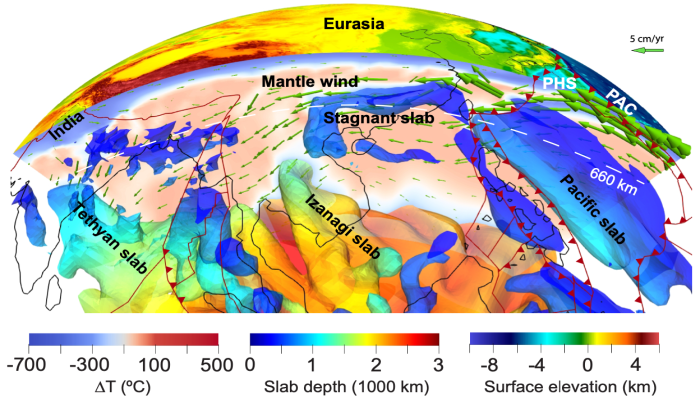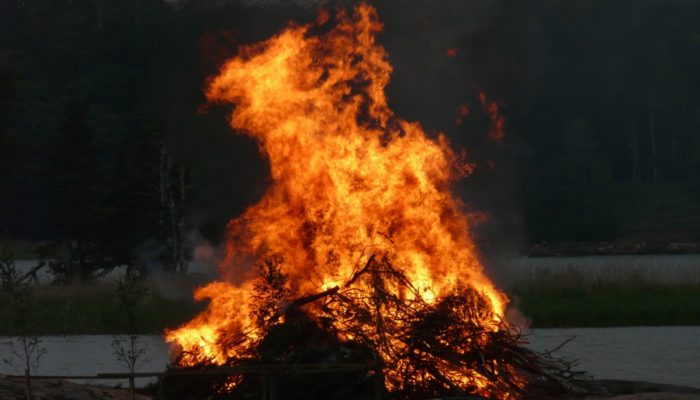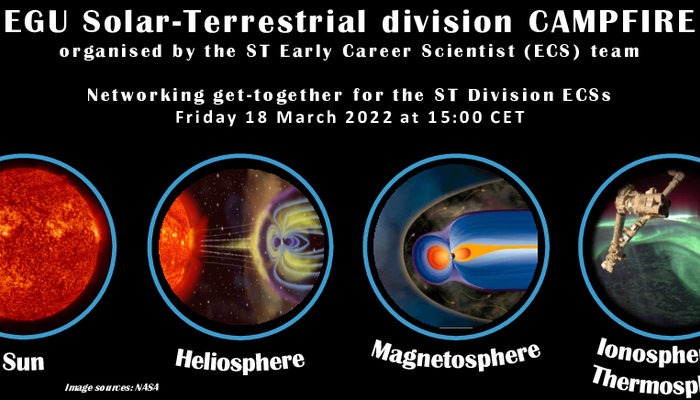Mechanisms for stab stagnation are essential for understanding the mantle circulation patterns. This week, Diandian Peng, a graduate student from University of Illinois explores how dynamic pressure gradients can pull the slabs sideways stagnating them at the Mantle Transition Zone. Seismic imaging provides critical constraints on the structure and evolution of subducted slabs. Numerous tomographi ...[Read More]
Geodesy
EGU Campfire Geodesy – Share Your Research – Fifth Edition
We all welcome you around our fifth EGU Geodesy Campfire to listen to two exciting talks by Eva Börgens and Sandro Krauss. The Geodesy EGU Campfire Events “Share Your Research” will give (early career) researchers the chance to talk about their work. Below you can find detailed descriptions about their talks. We will have time for networking after the presentations. Please join us on Zoom o ...[Read More]
Biogeosciences
What more can we do as climate scientists to address climate change?
Fig 1 — Artist impression of Earth (source: Unsplash, Elena Mozhvilo) The much anticipated COP26 — even more so because of its postponement — is now already a few months behind us. There has been a lot of attention in the media, including on the BG blog. We have seen mixed reactions following the final statement at COP26: ranging from disappointment about lack of ambition to realism ...[Read More]
Geodynamics
The Sassy Scientist – Chill Pill Refill
Angela is one to stress out just a wee bit every time a conference is right around the corner. It’s almost like she consistently doesn’t prepare in time. Ever so slightly concerned, her office mate asks: How last minute is too last minute when preparing for a conference? Dear Angela, Just take a breather and come down from your academic productivity high! It’s an untenable situat ...[Read More]
Cryospheric Sciences
You left us too early: a eulogy to permafrost
Most problems faced in research are complex and require creativity and critical thinking. Thus, we need to be creative in science! Or maybe, science itself is creative and there is no such thing as non-creative science. Anyhow, in today’s world, where TED-talks, science slams and elevator pitches, not to mention tweets, are ubiquitous, it is important that scientific expression takes on a form tha ...[Read More]
Geodynamics
Paleogeography and the Northern Hemisphere Oceanic Gateways
Eivind Straume a Postdoctoral fellow at the Department of Geological Sciences within the Jackson School of Geosciences explores how the opening and closing ocean gateways have influenced the Earth’s climate in the past. Changes in Earth’s geography due to tectonic plate motions and mantle convection influence climate evolution on geological timescales. Over millions of years, continen ...[Read More]
Atmospheric Sciences
Crowdsourcing air quality management data from: A pilot study in India
India is experiencing an “Air apocalypse” and the Global Burden of Disease study has estimated the death toll has reached 1.67 million in 2019. Almost 100% of the population is now exposed to PM2.5 level higher than WHO (World Health Organization) recommendations. However, common citizens are generally unaware of the seriously damaging effects of poor air quality, largely because of the lack of ad ...[Read More]
Solar-Terrestrial Sciences
ST-ECS networking campfire event
The EGU Solar–Terrestrial physics (ST) division’s early-career scientist (ECS) team is organising a so-called Campfire event to gather the community together before EGU22 and promote networking among ST-ECSs. The event will be held on Zoom and will take place on Friday 18 March 2022 at 15:00 CET, for a duration of one hour. We will make use of breakout rooms to facilitate discussions in smaller gr ...[Read More]
Tectonics and Structural Geology
TS Must Read paper – Foreland Basin Systems, DeCelles & Giles (1996)
Foreland Basin Systems, by DeCelles and Giles (1996), expands the concept of foreland basin into the more comprehensive and integrative concept of foreland basin systems. Foreland basin systems can be defined, as per this TS must-read paper, as compressional regions where various tectonic forces lead to flexural responses of a variable wavelength, which may in turn lead to up to four areas with po ...[Read More]
Seismology
SENSORChat: Go with the UPFLOW – detecting powerful motions deep within Earth’s interior
“SENSOR” – stands for Seismological Experiments, Network Systems, Observations and Recovery In this blog series, curated by Chiara Civiero, we share news about recent or upcoming seismic experiments around the globe! Could you explain what your project is about? While downward mantle flow (subduction) is well constrained, a grand challenge in Earth sciences is to understand mid-plate, deep upward ...[Read More]









